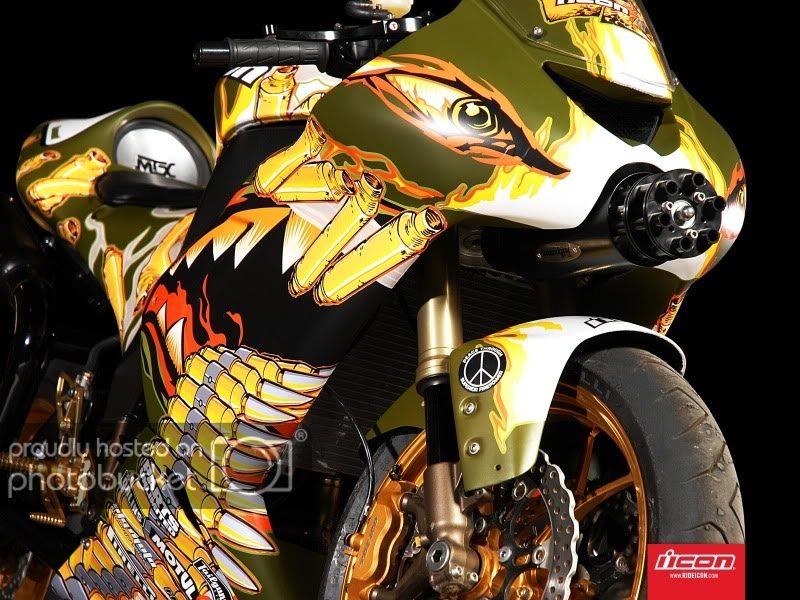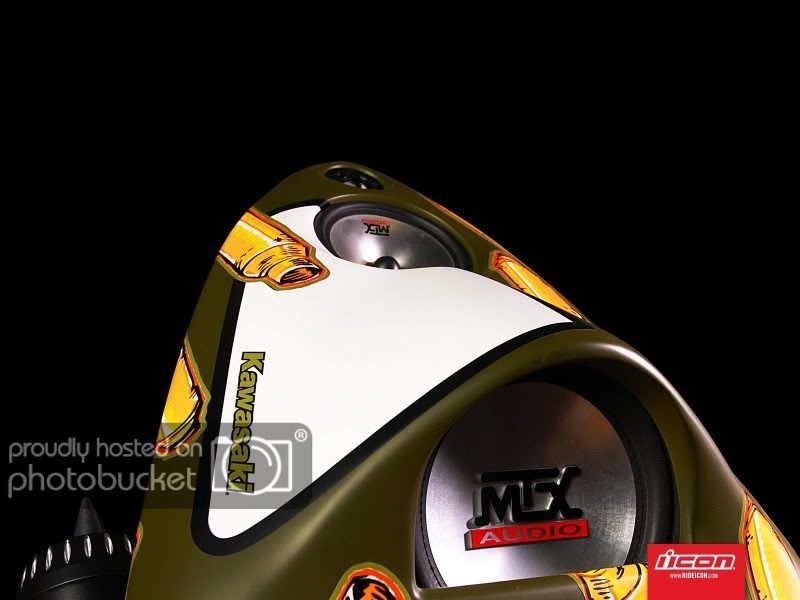Nothing to do with speakers but the space they're in. The fundamental shape is wrong, the materials within it are wrong and it's an undamped metal cage with the holes filled with glass. You couldn't possibly devise a worse acoustic chamber.
It can be compensated for to some degree in many areas but, as I said earlier, for ever $10 spent on a car sound system, $9.95 is wasted either because it's acoustically dreadful or to compensate for it.
It still has nothing to do with whether or not stereo equipment in a car is for "show".
And you've chosen to liberate the meaning of "show parts" to anything that does not improve track performance.
Do you not live in a house?
There are laws, it's generally referred to as "disturbing the peace" - aka noise violations. So long as you have neighbors.
I never said music cannot sound good in a car. I said that it's the worst possible place to put a stereo.
Cars are acoustically awful. I'm not the only person in the world to say this.
For me it's the best possible place. And it has nothing to do with sound quality.
No-one who cares about sound quality speaks in amp output or speaker output. This is the land of people who care about how much noise they can make - better known as car audio.
Perhaps you're right - you said they speak in terms of "quality", right? How's that work, scale of 1-10? 1-100? And off who's opinion?
The stereo in my house has 1000 watts. That's also not car stereo speak. But here's the irony - 6 speakers, 1000 watts, surround sound, and the quality is worse than in my car.
That's right, in that undamped metal box with holes and glass, the factory stereo sounds better than this $400 Home theater system in the house.
By your rate of 9.95 out of 10.00 wasted, that must be a.... $80,000 stereo in my car.
I've never seen any show car modified to the tastes of anyone but the person modifying it.
Though they are generally chronic attention whores.
And how do they attempt for attention? It's certainly not from modifying with the "who cares what anyone else thinks" motto, is it?
Depends on what the "just wheels" are. Do they suit the purpose/function? If so, then they're not Barry. Are they excessive, distasteful and/or improper? If so, then they are Barry.
Go back and look at the Lamborghinis.
And I'll have your definition. I can't see what size they are, so I don't know.
Who said they don't do anything? I said "tyre width does not affect grip significantly" - and you bolded it. "Not significant" is not "nothing".
Nevertheless, I fear you misunderstand why sportscars have wider tyres. I wonder... do you believe Porsche fit drilled discs because it makes them stop better?
But tire width does, so long as the weight on the tire is sufficient enough to load it properly. Putting 345mm tires on a 2200lb Miata would likely cause a loss of grip. Putting 345mm tires on a 3400lb Viper increases grip. Based solely on that, one could calculate a 3400lb Buick could certainly gain from raising 215 to 225. Especially on the front wheels.
Brake systems do 2 things, have enough power to lock the wheels, of which more is required for a car with more grip, and slotted rotors, specifically, would be solely for cooling, and the attempt at fade-free brakes.
I had an Oldsmobile which could easily lock it's 185, but when fitted with a higher models 215's, it could not lock the brakes. This tells two things, one is that the wider tires (and lower profile) significantly increased tire grip, along with the ever elusive knowledge that upgraded braking power can also decrease stopping distances depending on different factors.
So to go farther into detail and answer your actual question, I know what brakes do and how they work.
All other things being equal, larger wheels and tyres are heavier.
yes and no. You're assuming two things which are sometimes false. Number one is that wheels are heavier than tires, which they are not, as I've already shown you, and two is that when upgrading the size of the wheels and tires, you will increase the overall size, which is common, but not always the case.
Rolling resistance is almost completely irrelevant. However, unsprung weight is not. Unsprung weight has approximately 4 times more effect on vehicle dynamics than sprung weight. Adding 2lb a corner is equivalent to adding 32lb to the vehicle's weight.
True.
You also have 10mm wider tyres - that's 20mm extra frontal area in total, or about 3sqin. If your car is an average car and previously aero-limited to, say, 140mph you've just taken 0.5mph off your top speed. Along with increasing unsprung weight (which is considerably more damaging).
That completely depends on your vehicles overall frontal mass, and airflow. What's .1% on a small car, is .05% on a large car.
Lower profile = less sidewall flex (all other things being equal). This leads to undesirable grip/slip transition characteristics.
There's a reason "old school" thinking still exists. It's right.
Did I forget to mention the "upgrade" to 225's is another factory size?

I guess those idiots at GM didn't realize they gave the GS and LS with the GS wheel package
undesirable grip/slip transition characteristics
Stock 1 is 215/70/15
Stock 2 is 225/60/16
So it seems they felt it was an upgrade also.
The higher size I quoted (225/50/17) would be a slightly farther upgrade.
Now that doesn't mean 225/40/18 would be even better, as there is a limit, and I won't pretend I know exactly where that limit is for this particular car, but given the tires equipped on higher model and sportier cars, claiming 50 series tires will hinder performance due to being to low profile on a 3400lb passenger car is nothing short of asinine.
New tyres are supplied with, normally, 8mm tread depth. The legal minimum here is 1.6mm. That's half an inch (12.8mm) of diameter lost between new and bald.
Wrong. 10-13 mm. Well, wrong for the US. And here the at least in this state, but I believe 50-state DOT mandated is 2mm minimum.
And I actually haven't seen any tires for sale new with less than 10mm quoted, though I won't rule a few select possibility's out.
Drivetrain losses are exacerbated by heavier wheel/tyre units along with, if you wish to change your wheel design, rotational mass. You may have a lighter wheel, but if this wheel has more of its mass to the outside of the rim you will increase drivetrain losses. This also applies to tyres - you have a 22lb tyre wrapped round your bigger wheel in a 112mm band and you have a higher concentration of mass further from the point of rotation than if you have a 22lb tyre wrapped round your smaller wheel in a 150mm band. Not to mention the effect the wider wheels/tyres will have on caster.
Got your numbers backwards.

True though, nonetheless. But your exaggerating the real world performance effects.
If you do it right, you'll have increased grip, off the line, stopping, and cornering, and the potential loss in straight-line acceleration won't even be noticeable with a small increase such as the one I demonstrated.
Further to this, your sidewall forms part of your suspension - a more significant part as the design sidewall increases. So if you're going for your bigger wheel and you have to reduce your sidewall by 34%, you reduce the effectiveness of that part of your suspension by 80% - meaning the rest of it has to take up the slack (no pun intended).
You're assuming that the suspension actually needs that give to perform. On many American cars, the suspension tire combo is already to giving, and the lack of sidewall give will do only one thing - improve cornering response.
Now if the car was tuned for optimal handling with it's specific tire size combined with it's suspension, there is that potential, however, on many cars sold in the US, optimal cornering ability is not first in line when these decisions are made.
It would seem as though you're speaking of cars with cornering performance in mind when they left the factory - most US cars - especially older ones, have extra profile added just to make the ride more absorbent, not for better cornering, but for relaxed cruising.
Now I'll point out that almost every time a manufacture makes a "special" model, designed for improved handling, they have larger wheels and tires, with lower profile, even if the suspension remains untouched. And it works.
So confirm for me that people who take "gay" as an insult are right and that being gay is bad.
Only that's the only way you can be correct that "Barry" is always a bad thing.
It doesn't have to mean being gay is bad. If I call you gay, it is an insult.
Not true. Some people believe gay is bad, some don't. Not everyone would be offended by being called gay.
Everyone is offended by being called a ricer.
If you walk up to two guys making out, and say "hey, you guys are gay" they're quite possibly/probably going to laugh and call you captain obvious.
If you walk up to two ricers, and call them ricers, they'll
always be pissed.
Why do you need to say this?
My car has tyres with a higher coefficient of grip than standard, with higher friction pads, discs which dissipate heat better and fluid which dissipates heat better. I've told you this. It stops, goes and turns better than when it was new.
The exhaust is also optimised since - and I'm sure you're aware of this - factory standard emissions equipment are required to fall within certain boundaries depending on age, transmission, fuel and engine swept capacity (or equivalent). They are not usually, for mass-produced cars, ideally sized and flowed for scavenging and power generation (to say nothing of the silencer equipment). It's not the most effective exhaust it could be, since the design of the car rules out a straight pipe, but it is slightly more efficient than stock.
I say it, because you say nothing of how they're improved, just that they are.
Did you remove factory standard emissions equipment? Is some of that gone now because of changing exhaust? And if so, I have to wonder if it's hurting your performance or helping. How are the pads higher friction? How do the rotors dissipate heat better? Are they slotted? Cross-drilled? Or just expensive factory replacement?
And tires, well, they may be better than stock, in softer/more efficient tread/compound, depending on how old it is, they could be cheapies and still be better, as tire technology has gone through the roof in the past 20 years.
But as you were pointing out, pads with higher friction, and rotors which dissipate heat better, will not decrease stopping distance, only reduce fade.
Lastly, very few people consider buying high-line tires when old ones are bad an "upgrade". It is an improvement, but it's also still stock, because many cars came with tires not even produced anymore. More cars on the road actually can't be "stock" in that sense than can.
First thing that happens when someone slaps on a massively overbored exhaust and eBay cone filter? They advance the timing to compensate for the loss of power.
I guess. Still haven't seen any documentation of anyone losing power off any after-market intake and cat-back exhaust.
You have to remember, just because the tip is 4 inches around, doesn't mean anything else in the exhaust is.
And even if people have lost power from giant exhausts, it still won't give you an answer as to where the line is between gaining performance and losing it.
You have a small 4-cyl, I have a large 6 cyl, I could slap much larger exhaust and make it much louder while still gaining performance than you, let alone the differences between turbo, supercharged, and N/A, let alone different factory tunes...
So the bottom line is, you can't say just looking at any car's exhaust if it's gaining power or not, and fact is, more often than not, they do gain something from it.
But it's okay because all-show-no-go is not the original definition of ricer. Trying to make a slow-ass car seem fast, combined with thinking a slow-ass car is fast, and ridiculous, excessive or improper modifications is the original definition of ricer. Combined with trying to make a low model appear as a high model, like a V6 Mustang with GT exhaust tips/mufflers, GT badges, etc.
Or a V6 Mustang with a body kit, clearlights, exhaust, and purple window tint.
22 inch spinners, with giant subwoofers, tint, and dvd players on an Escalade doesn't really fit the "ricer" term either. Because "ricer" is for people from Asia, and people with Asian cars that did it. The pimped Escalade has no relation to it, and stems from blacks in inner cities of America, whether athletes, entertainers, or drug dealers.
But this could be because you're using the term "barried" on another continent, and chalking it up to being the same as ricer.
Scaff
For someone who is making rather bold statements about other members not understanding tyre dynamics and the effect they have on the suspension system, its you who has a lot to learn.
Lower profile is not always better at all, certainly not when it comes to dynamics, as with any area of vehicle dynamics it is a matter of compromises.
Read your own answer.
Scaff
"Please read a bit more carefully before making yourself look foolish, it quite clear says that it does not increase grip significantly.
If you are going to comment on what someone says at the very least do them the credit of being accurate."
I never said lower profile is always better, did I? Feel free to quote.
I can think of two specific examples of this. One is the current 3-series (a car I drive), which rides and handles far better on higher profile tyres fitted to the standard 16" wheels rather than the lower profile tyres that come with the 17" upgrade alloys. The lack of sidewall flex causes understeer to occur much earlier, particularly in cold or wet conditions, and makes the car almost undrivable in snow.
Two things, the first is that the lower profile performance tires wouldn't be optimized for snow, and possibly not even rain, dry would be where they were expected to perform better.
Secondly, You could have had either over or under inflated, a small difference is air pressure makes a large difference driving.
The last option is that BMW, one the highest-renowned handling manufactures, doesn't put in all the thought and engineering into wheel/tire packages you seem to believe they do.
The second is Formula 1, which also highlights Famine's point about the sidewall being an integral part of the suspension system. Now these are about as far from low profile tyres as you can get and are actually engineered to provide almost all the compliance in the suspension system, with the actual spring and damper rates set almost solid.
Correct. Now spot me the difference between 3400LB passenger cars with cushy suspensions vs F1 cars.
Also spot me the fact that BMW didn't put enough "engineering" into their wheel/tire package in your first example, and screwed the car up, at the very least, in your opinion.
What is it with this 'angry old man myth' line?
Because it's the guys that speak in terms of 60's cars, carburetors, and younger guys that follow them that are always talking about "losing power off the air filters and mufflers kids put on their cars nowadays" - And they're typically 40-65, and bitching about fart cannons, complaining about the noise, and 5 minutes later revving their 120db Harley to max 8 times in a row at every stoplight.
If you don't understand it then it automatically falls into this category?
No, everyone I hear say it is either middle aged-to senior, angry, complaining, and doesn't know squat about newer cars.
The Intake and Exhaust sides of the internal combustion engine are not simple by any measure and unless one is balanced with the other, any change can just as easily result in a loss of power rather than a gain in it.
A simple half-assed chip that spliced into the intake air sensor and adjusted the air/fuel ratio, and one of those "damned cone filters sucking in hot air" under the hood - made my old car rund .3 quicker in the 1/4. Says repeated runs, 10+ each, consistent runs, and an NHRA dragstrips timing equipment.
Turn the chip off - -.15
Put factory airbox back in - -.15
Didn't matter which way I went, both were a solid .15 improvement on, and full-factory was .3 slower.
I also gained another tenth by just slapped the cone filter directly onto the throttle body, right in the middle of the engine bay.
So yes, the real-life proven performance gains I tested and ran myself were more than enough to convince me that these myths you speak of, are rare cases at best.
As for just adding a cone filter, often this is far less effective that the standard air box. As if its not correctly routed then the extra air it is now drawing in is hot from the engine. Hot air is less dense and lower power is the end result.
Read above. I gained, and even thinking it would lose power, I tried it, just to see how much I would lose, and yet, I gained, from both a cone filter stuck onto the end of the intake manifold, at the throttle body, directly in the engine bay, and slightly less gain from running the aftermarket kit that routed up to where the factory airbox laid.
Famine (once again quite clearly) stated that well balanced the gains can be plentiful, a point you ignored.
He did, but like you, he said in all the wrong ways.
I've seen undeniable proof that a simple cone filter in the engine bay, sucking in "hot air" take time off my 1/4 mile runs.
You see, something you guys overlook, is whether or not cool outside air runs up through the area, and/or is it's just simply too restricted from the factory that it's just getting so much more air, the increased heat isn't enough to reduce the power.
So my only suggestion to you, is to stop assuming what you hear and read is granite, and test it. Slap a cone filter intake on that Miata, or BMW, and if you don't have a dragstrip, buy a G-tech if you don't have one, and test them down the same section of legal ground, hell, illegal ground for all I care.
I don't care about dyno results for it, unless there's a big-assed fan blowing just like driving wind on that car, at the appropriate speed.
A Ram-Air car might dyno as low or lower vs the same car without it, but that doesn't mean it has less power driving does it?

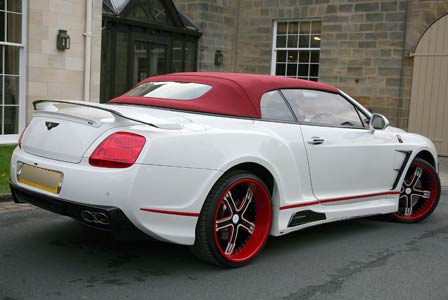
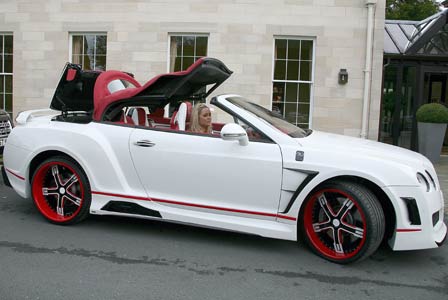
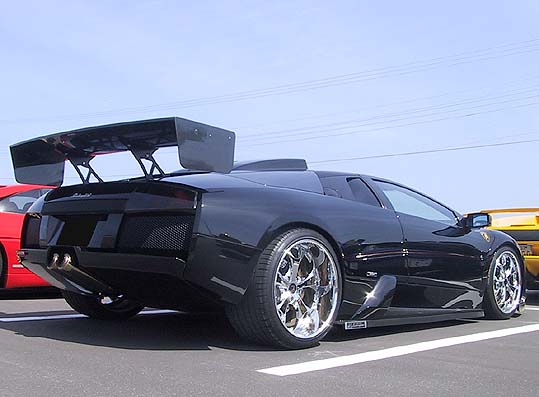
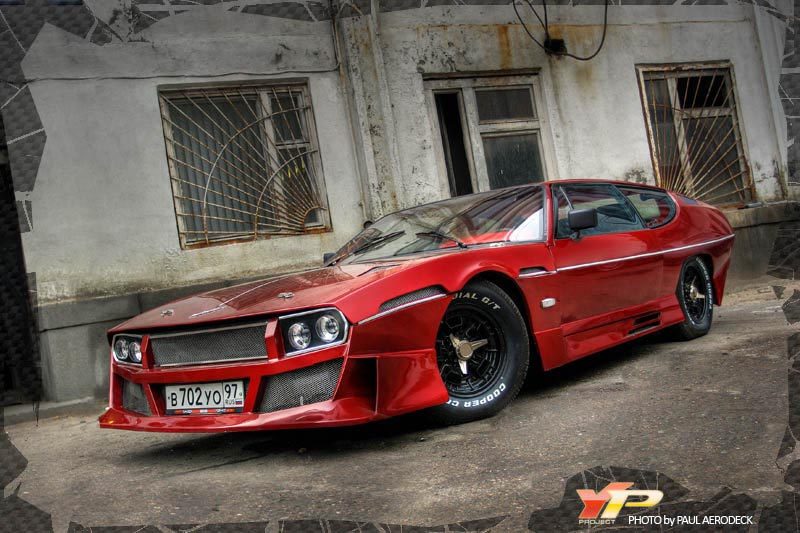
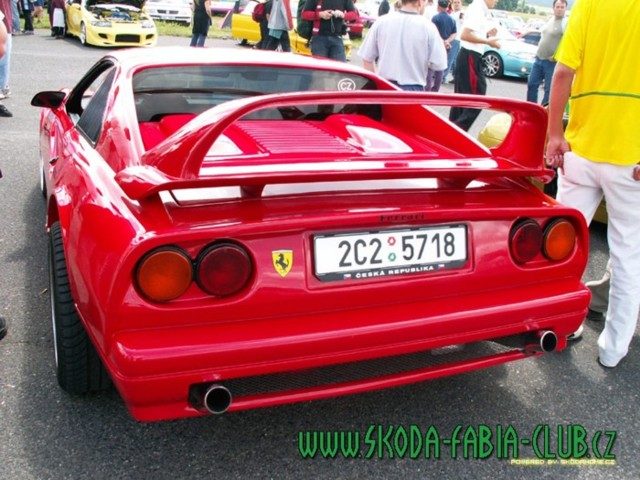



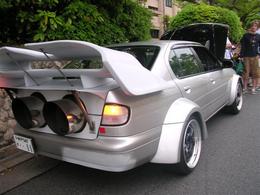
 Even though I do like the theme... a sound system on your bike with LCD screen where the speedo and rev counter should be with weird exhaust tips..... This has got to be rice... right?
Even though I do like the theme... a sound system on your bike with LCD screen where the speedo and rev counter should be with weird exhaust tips..... This has got to be rice... right? 

